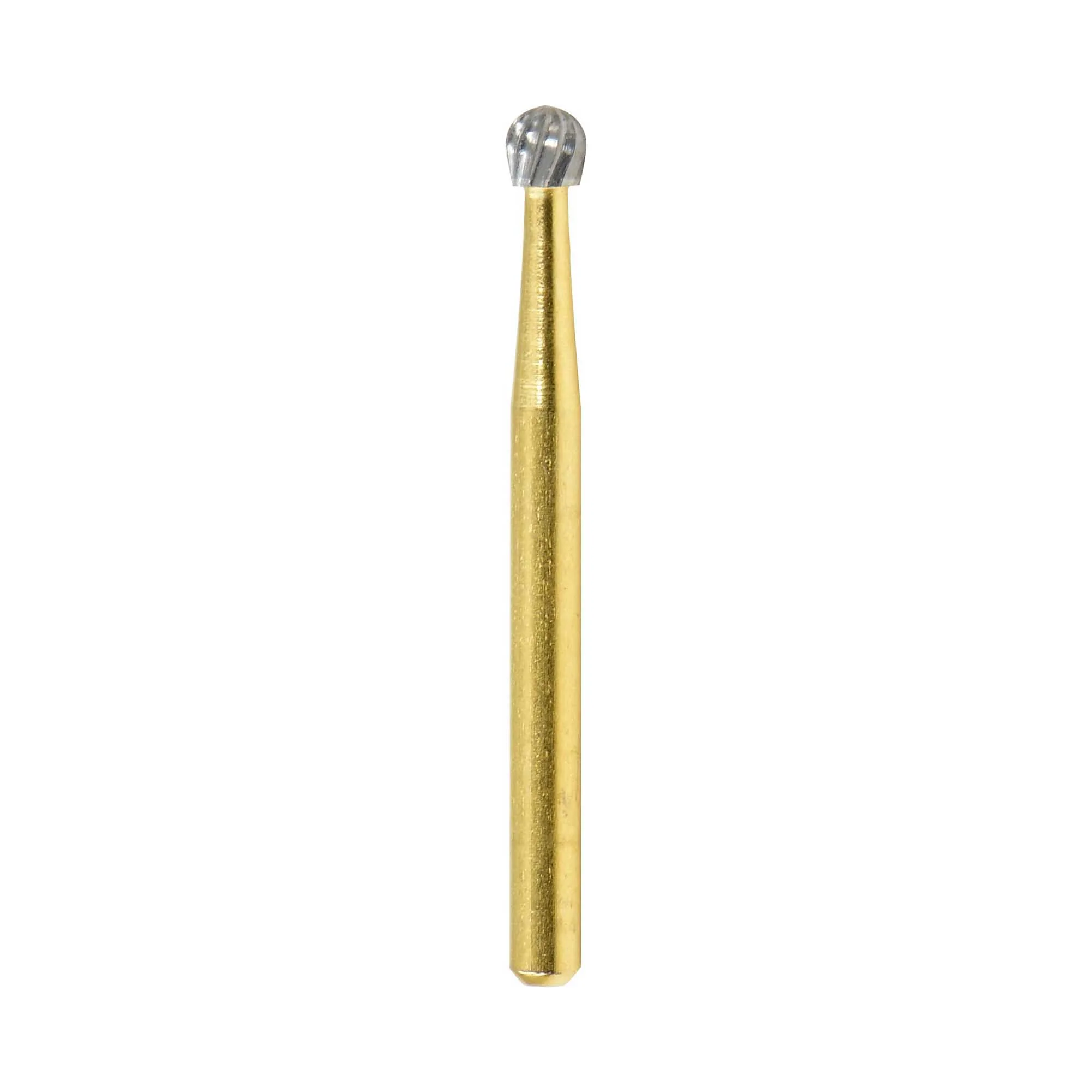Introduction to carbide burs in dentistry
Carbide burs are an essential tool used in various dental procedures due to their exceptional precision, efficiency, and durability. These tiny yet powerful instruments made from tungsten carbide significantly enhance the quality of dental care by enabling dentists to perform intricate tasks accurately. This article delves into the numerous applications of carbide burs in dentistry, their benefits, maintenance, comparison with other burs, and future trends in their technology.
Benefits of Using Carbide Burs
● Enhanced Precision and Efficiency
Carbide burs in dentistry are renowned for their ability to cut smoothly and precisely through both hard and soft tissues. This precision minimizes trauma to the surrounding tissues, leading to less discomfort for patients and quicker recovery times. The efficiency of carbide burs also allows dentists to complete procedures more swiftly, which can enhance patient satisfaction and reduce chair time.
● Longevity and Durability
One of the standout features of carbide burs is their durability. Made from a compound of tungsten and carbon, carbide burs are resistant to wear and tear, ensuring a longer lifespan compared to other types of burs. This durability means they remain sharp for longer periods, maintaining their cutting efficiency and reducing the need for frequent replacements.
Cavity Preparation with Carbide Burs
● Techniques for Effective Cavity Preparation
Carbide burs are a staple in cavity preparations, facilitating the removal of decayed tooth material and the shaping of the cavity for effective restorations. Their sharp cutting edges provide clean and smooth cavity walls and floors, which are essential for optimal adhesion of restorative materials.
● Tools and Equipment Integration
Carbide burs seamlessly integrate with various dental handpieces, allowing for versatile use in different cavity preparation techniques. Their compatibility with high-speed and low-speed handpieces makes them adaptable to a range of clinical scenarios, from initial cavity access to final refinements.
Dental Decay Removal
● Methods for Efficient Decay Removal
The removal of dental decay is one of the primary uses of carbide burs in dentistry. Their superior cutting ability allows for the effective and precise elimination of decayed tissue, leaving behind a clean and healthy tooth structure. This precision is particularly important in preserving as much of the healthy tooth as possible.
● Comparative Analysis with Other Burs
Compared to diamond and steel burs, carbide burs offer a unique combination of sharpness and durability, making them highly effective for decay removal. While diamond burs are also precise, they can wear down more quickly than carbide burs, making them less economical for routine decay removal.
Teeth Preparation for Restorations
● Steps in Preparing Teeth
Preparing teeth for restorations such as crowns, bridges, or veneers requires meticulous work to ensure the proper fit and function of the final restoration. Carbide burs are ideal for these preparations due to their ability to cut precisely and create smooth surfaces, which are critical for the adhesion of restorative materials.
● Role of Carbide Burs in Restorative Dentistry
Carbide burs play a pivotal role in shaping and contouring the tooth structure to accommodate various types of restorations. Their precision helps in achieving the ideal tooth preparation necessary for durable and aesthetically pleasing restorative outcomes.
Shaping and Contouring Dental Materials
● Applications in Dental Material Shaping
Beyond tooth preparation, carbide burs are extensively used in shaping and contouring dental materials. They are instrumental in trimming and polishing restorative materials such as amalgam, composite resins, and ceramic.
● Precision and Control in Contouring
The sharpness and durability of carbide burs offer unparalleled control when fine-tuning the shape of dental materials. This control is crucial for achieving the exact contours and finishes required for optimal dental restorations.
Types of Carbide Burs
● Variety and Specific Uses
Carbide burs come in various shapes and sizes, each designed for specific dental applications. Common shapes include round, pear, cross-cut tapered fissure, cylinder, and inverted cone.
● Selection Criteria for Different Procedures
The choice of carbide bur depends on the specific dental task at hand. For instance, round burs are excellent for initial cavity preparations, while cross-cut tapered fissure burs are ideal for creating precise angles and shapes during crown preparations.
Maintenance and Sterilization
● Best Practices for Cleaning and Maintenance
Proper maintenance and sterilization of carbide burs are vital to ensure their longevity and effectiveness. Dentists should follow manufacturer guidelines for cleaning and sterilizing these instruments to prevent contamination and wear.
● Ensuring Longevity and Performance
Regular inspection and correct handling of carbide burs will help maintain their sharpness and performance. Proper storage and avoiding excessive force during use can also prolong their service life.
Comparing Carbide Burs to Other Dental Burs
● Advantages Over Diamond and Steel Burs
Carbide burs have several advantages over diamond and steel burs. Their exceptional hardness and sharpness reduce the need for frequent replacements compared to diamond burs. Unlike steel burs, carbide burs maintain their cutting efficiency for longer periods, making them a more cost-effective choice for many dental procedures.
● Situational Recommendations
While carbide burs are versatile, the choice between carbide, diamond, and steel burs depends on the specific clinical situation. Carbide burs are typically preferred for tasks requiring precise cutting and shaping, whereas diamond burs may be chosen for ultra-smooth finishes, and steel burs for less demanding applications.
Future Trends in Carbide Burs Technology
● Innovations and Technological Advances
The future of carbide burs in dentistry looks promising, with ongoing innovations aimed at enhancing their cutting efficiency, durability, and versatility. Advances in manufacturing techniques, such as 5-axis CNC precision grinding, are expected to produce burs with even finer tolerances and superior performance.
● Potential Impact on Dental Procedures
These technological advancements will likely lead to more efficient and effective dental procedures, ultimately improving patient outcomes. As carbide burs continue to evolve, dentists can expect to benefit from tools that offer greater precision and reliability in their clinical practice.
About Boyue
Jiaxing Boyue Medical Equipment Co., Ltd.—is one of the leading manufacturers, which mastered 5-axis CNC precision grinding technology. It adopts advanced production technology and specializes in the production of medical rotary cutting tools. We have a full series of main production: Dental Burs, Dental files, bone drills, orthopedic and neurosurgery operation tools. Operative Carbides Dental Burs are for surgery use; Carbides Dental Burs are for industrial dentures fabrication, Laboratory Dental, CAD/CAM dental Mills burs, etc. Dental Files are for dental surgery use; Bone Drill are for orthopedic and neurosurgery operations. Boyue is a special manufacturer of Carbide burrs and dental files for the global market for over 23 years, capable of one-stop manufacturing from carbide burs to the finishing of end products for surgical and laboratory use burs and files with Class II medical equipment manufacturer. A wide variety of differently shaped heads is available to meet various customer needs.

Post time: 2024-09-16 14:55:02


